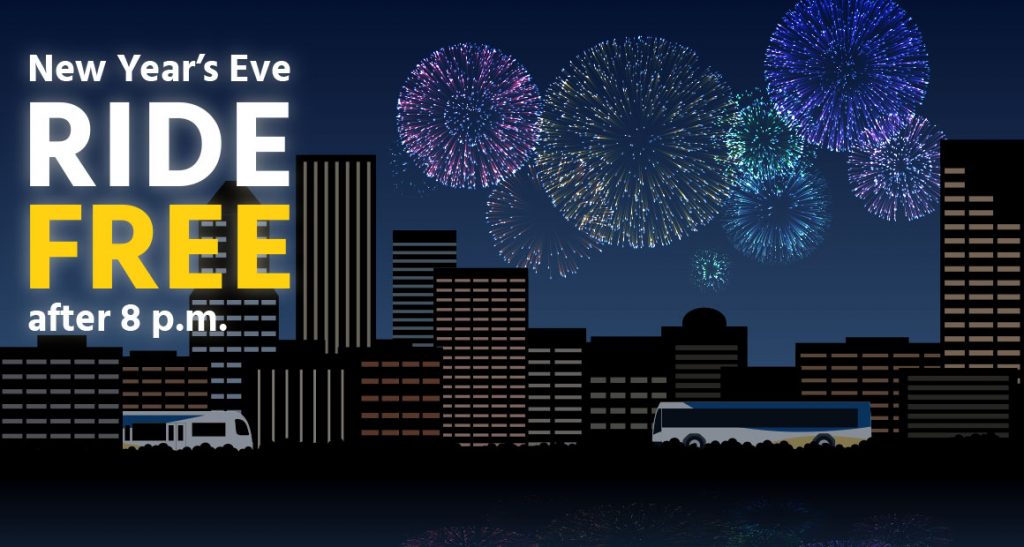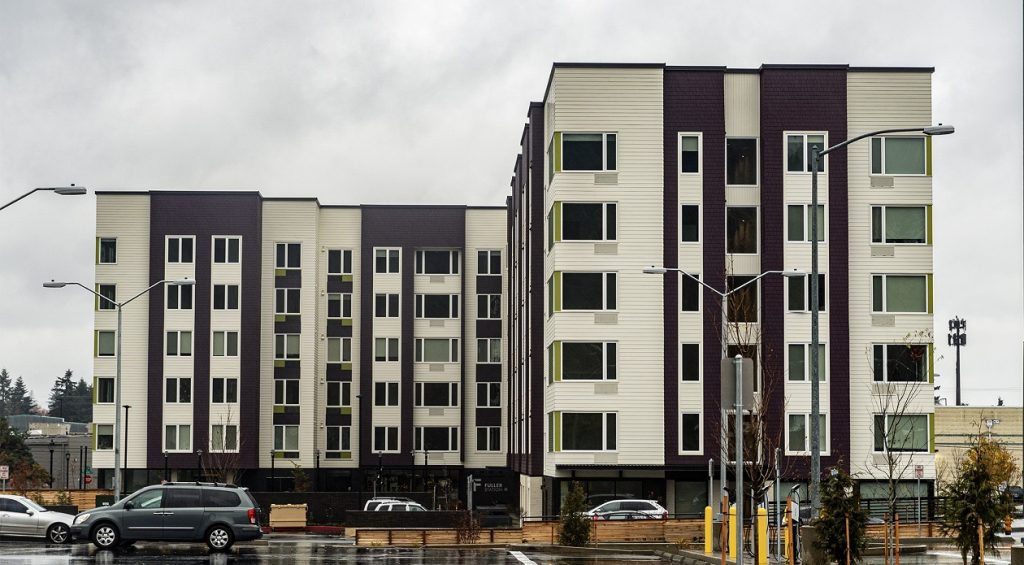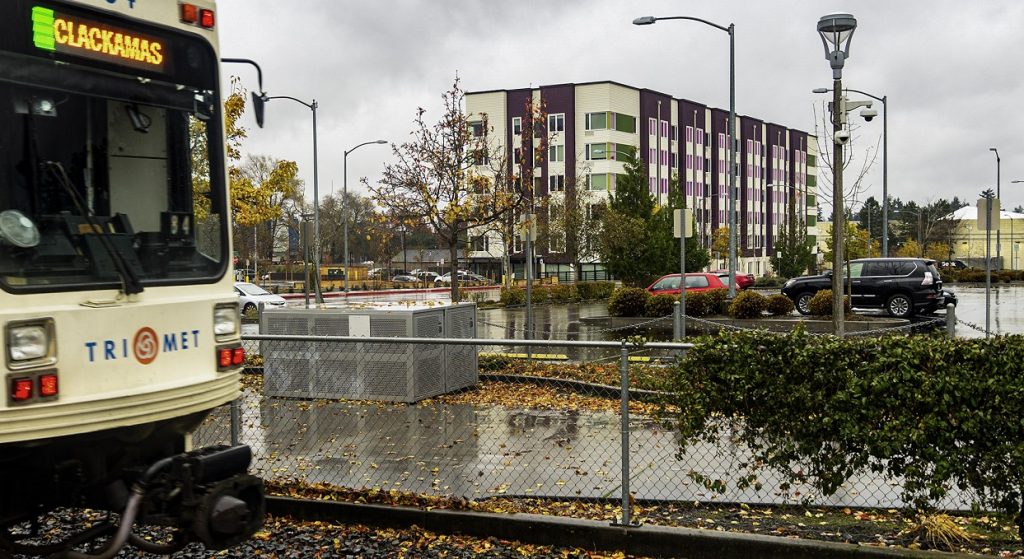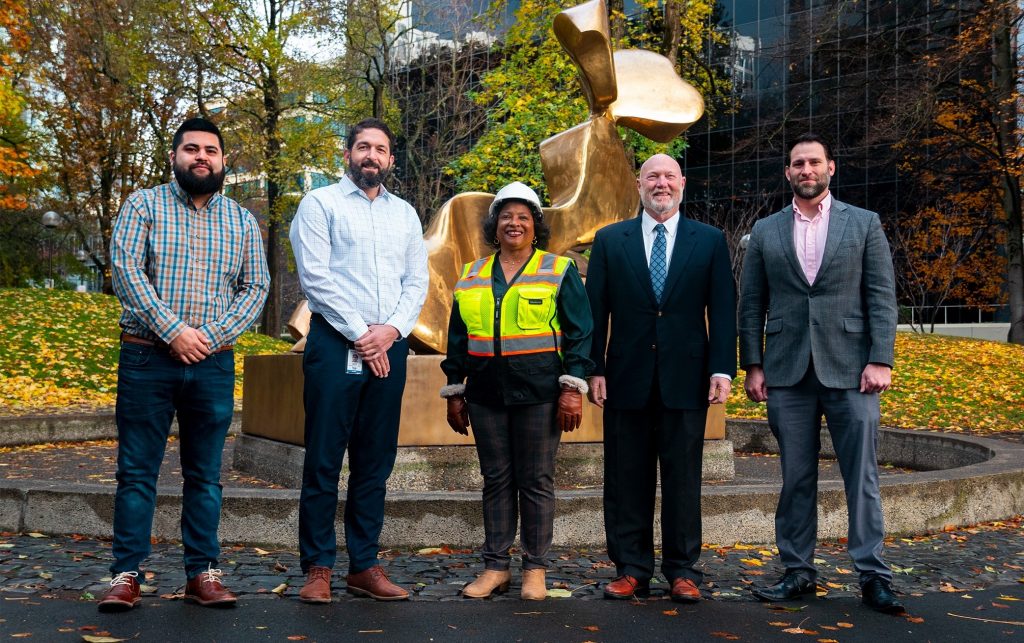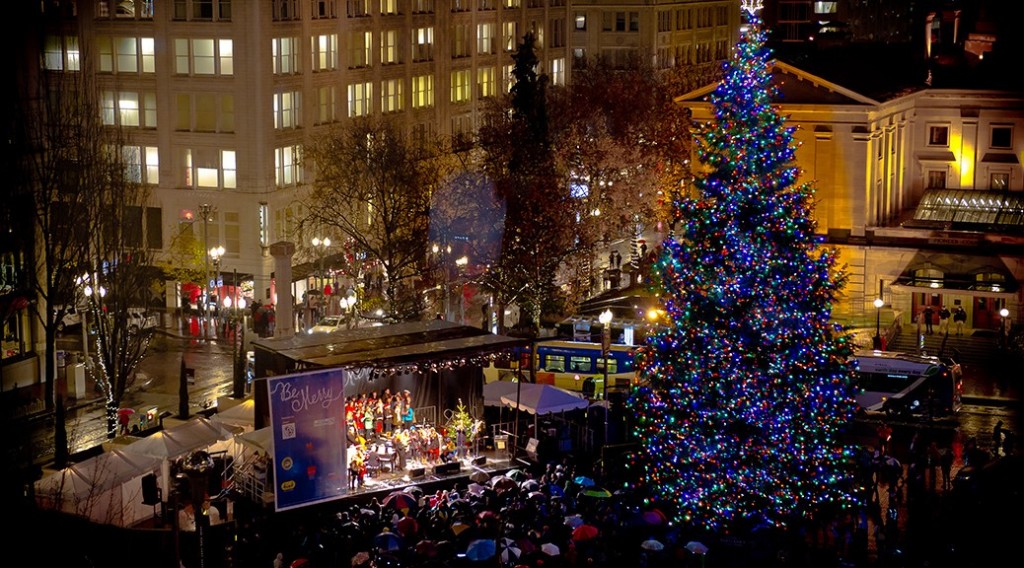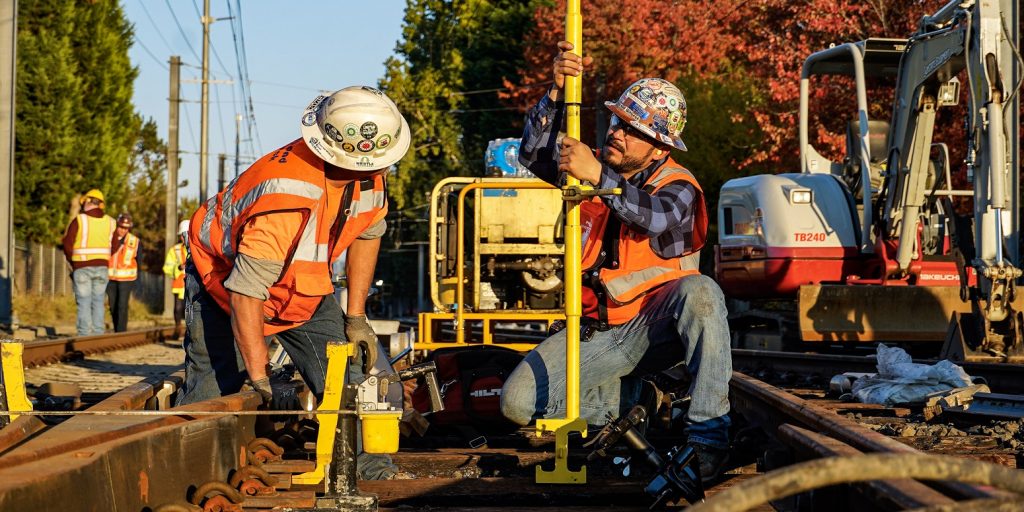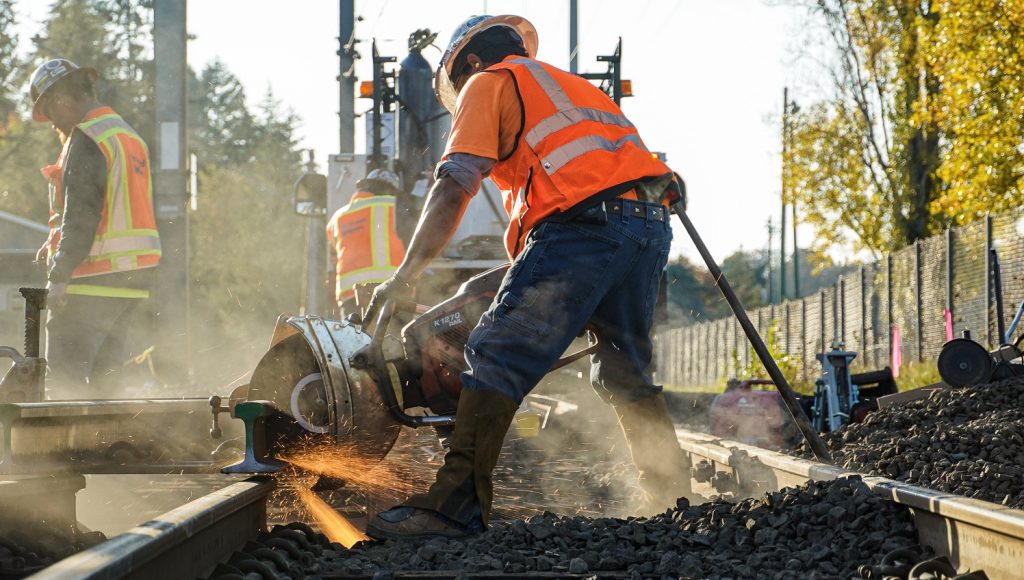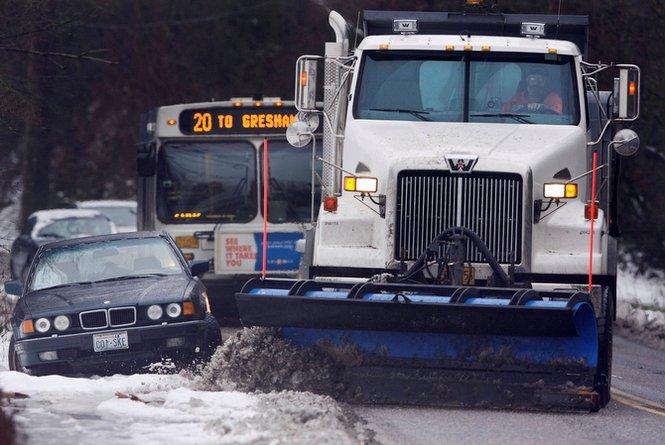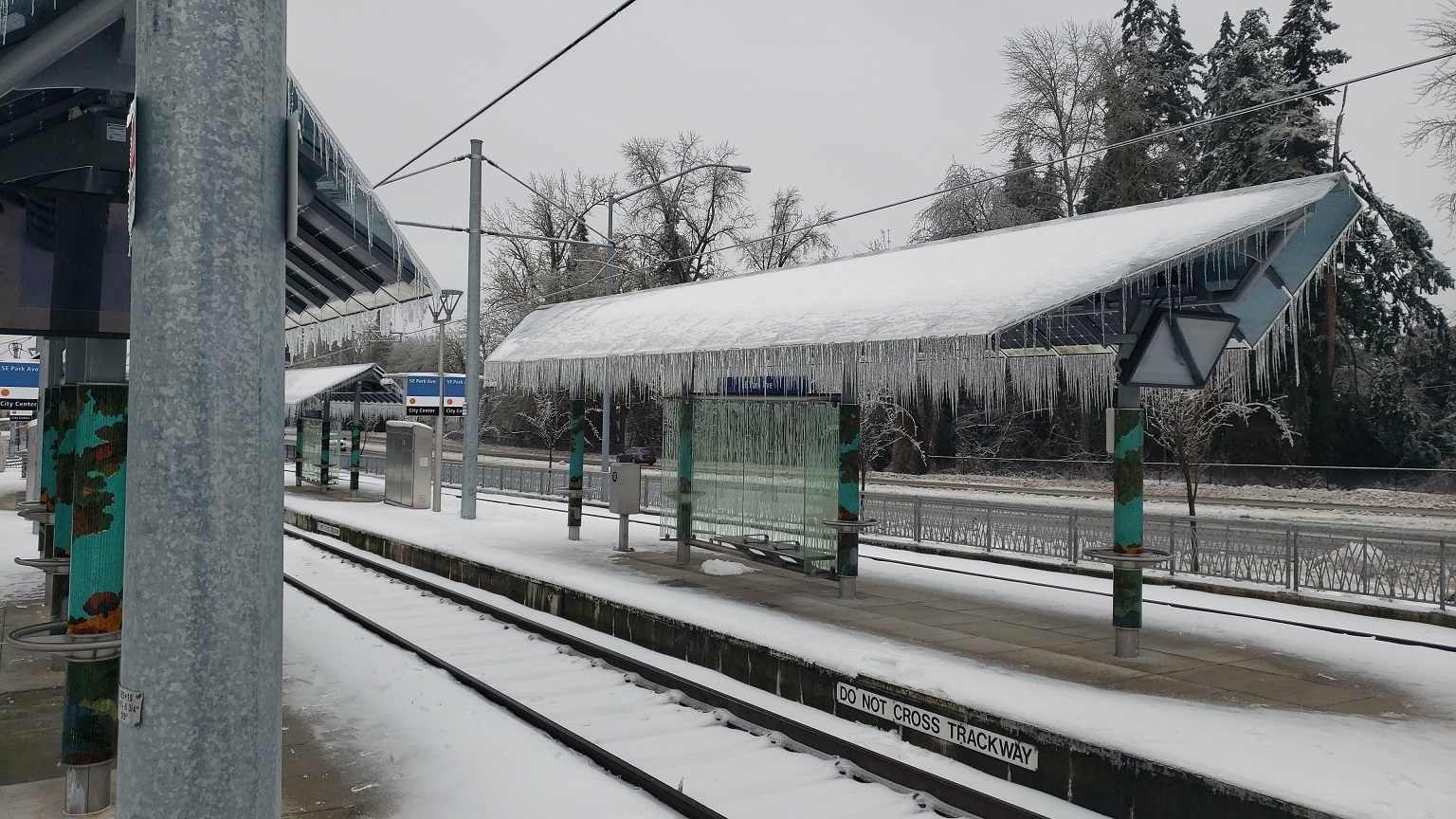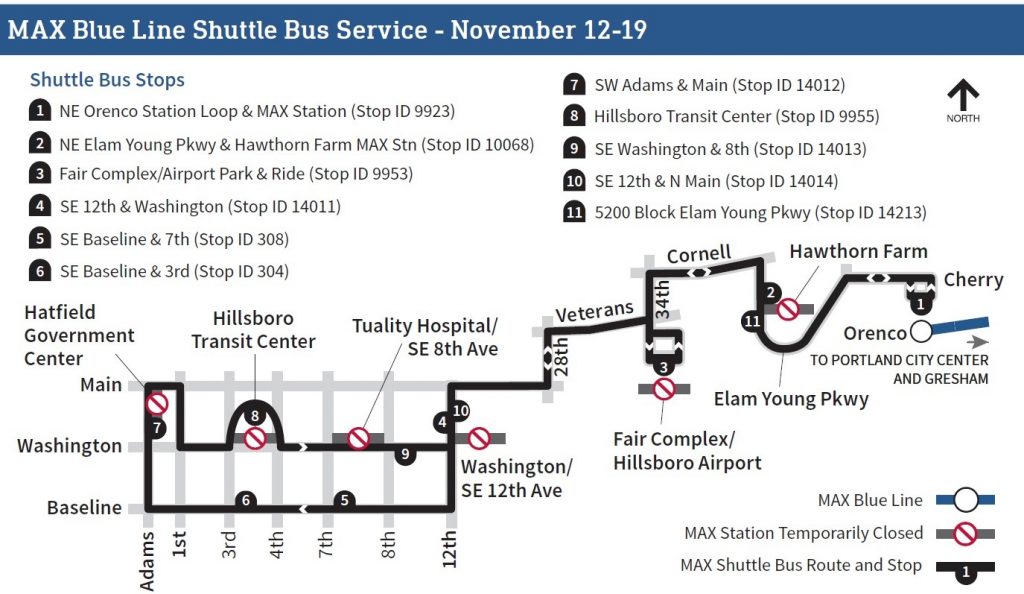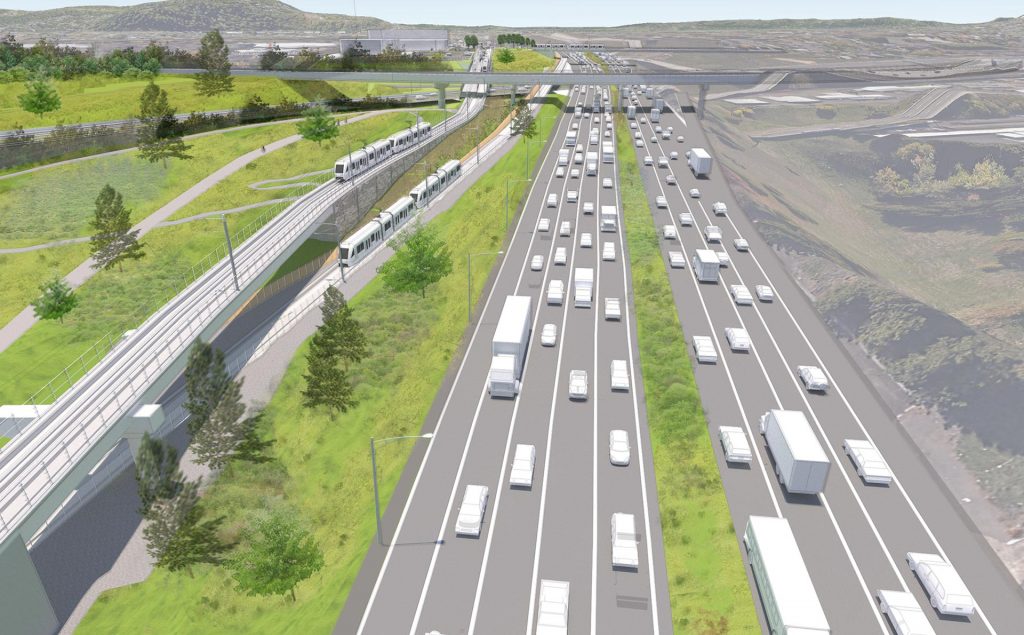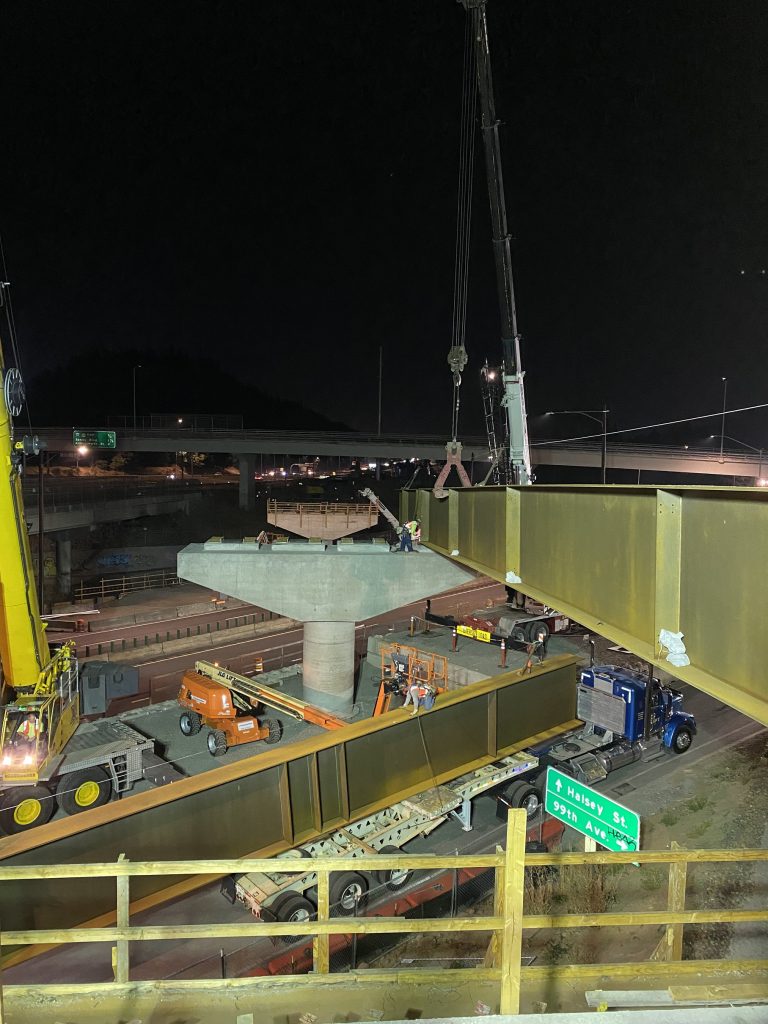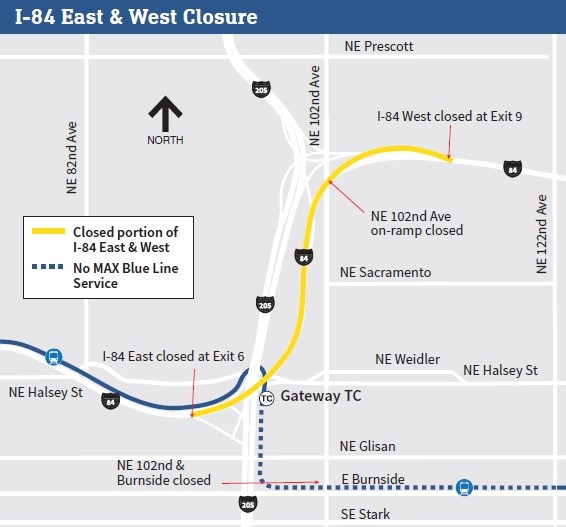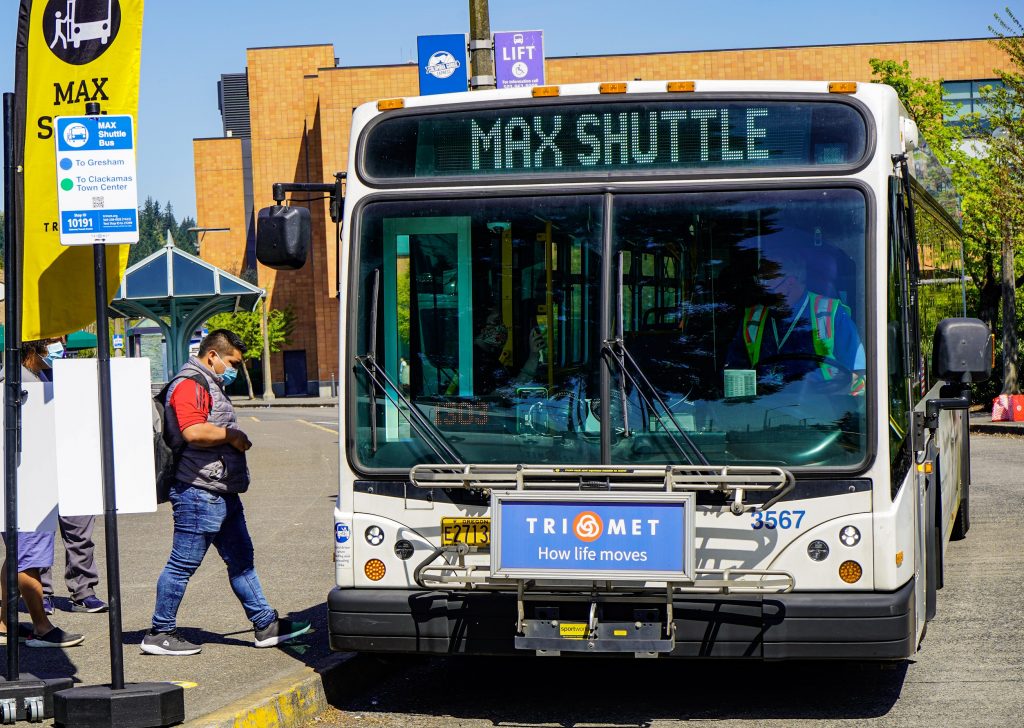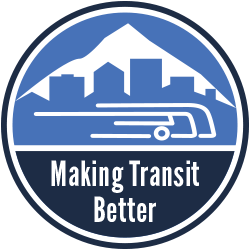Starting Jan. 23, some TriMet elevators will be temporarily out of service as crews work to install more durable doors
Improvements are coming to several TriMet elevators starting Monday, Jan. 23, resulting in two-day outages for six elevators at MAX stations, transit centers and a park and ride. Only one elevator will be out of service at a time, with the work scheduled to complete on Thursday, Feb. 9.
We’re installing new, stainless steel doors on the elevators that are sturdier than the existing glass doors. The stainless steel doors are heavy duty and able to sustain more wear and tear. TriMet hopes that by replacing the doors we will reduce the number of unplanned service outages and repairs needed. We thank our riders for their understanding as we work to make these improvements.
Elevator service schedule
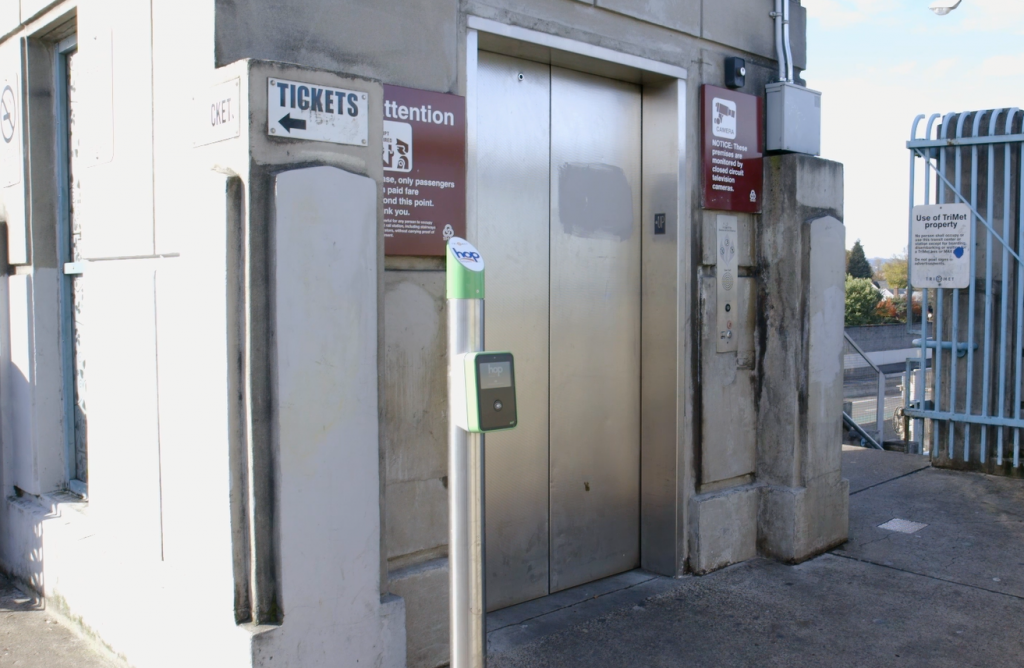
We know that elevators being down can pose a challenge for people with mobility issues, and we want to make it is as easy as we can for those who rely on the elevators to get around. We encourage riders to check trimet.org/elevators for more information and tips for getting around the scheduled work.
Elevator Outages:
Jan. 23-24: Hollywood/NE 42nd Ave Transit Center
Jan. 25-26: NE 60th Ave
Jan. 30-31: 82nd Ave
Feb. 1-2: Sunset Transit Center Park & Ride, garage elevator
Feb. 6-7: Sunset Transit Center, eastbound elevator
Feb. 8-9: Sunset Transit Center, westbound elevator
At the Sunset Transit Center, two elevators connect the upper level of the transit Center, where the buses are located, to the lower level, where the MAX platforms are located. One elevator connects the eastbound platform and one connects the westbound platform. During the closure of the platform elevators, those who cannot use the stairs can use the one operational elevator by going to the opposite end of the platform (about 200 feet) and using a temporary pathway to cross to the other side, where the elevator is located.
TriMet Elevators

TriMet’s transit system is home to 17 elevators that you can use to connect with MAX platforms or to reach the upper levels of our park and rides. Beginning in 2018 and lasting through 2019, we worked on upgrading many of them through TriMet’s Elevator Improvement Program. Most elevators can last 15-20 years without requiring major overhauls, although elevators located outside do face more wear and tear and exposure to the elements. The upcoming replacement of elevator doors is an extension of our ongoing efforts to better protect the elevators in the years to come. When elevators do need repairs, we work with contractors to fix the issue as soon as possible.
If elevators are an important part of your travel, please check trimet.org/elevators. On the webpage, you can sign up for email alerts whenever elevators are down or being repaired.

